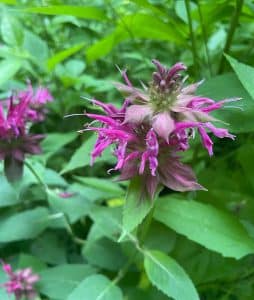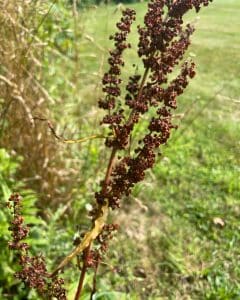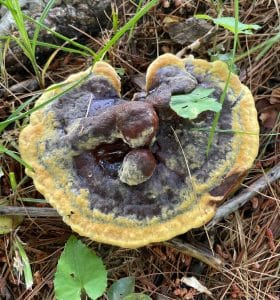Oregon is home to many mushrooms, many of which are perfect for both beginner and experienced mushroom foragers. The following list includes mushrooms that are commonly found on the West Coast and throughout Oregon!
Western Giant Puffball (Calvatia booniana)
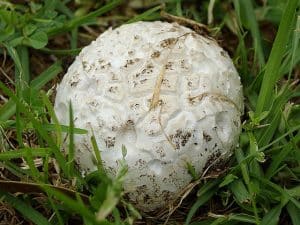
The Western Giant Puffball mushroom is most commonly found in meadows, forests, and fields, but you can also find this fungus in sunny areas, including roadsides and pastures. This mushroom can reach a diameter of three to 28 inches and is a round fungus with no stem. What sets this variety of puffball apart from others are the pointed warts that grow on the Western Giant Puffball’s exterior. This mushroom is best harvested when young, as this is when the flavor is the most potent.
Yellow Morel (Morchella esculenta)
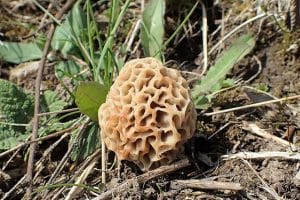
The Yellow Morel mushroom is also referred to as the blonde morel or the common morel mushroom The Yellow Morel is a fungus that commonly grows during the spring season and is identified by its sponge-like texture and pinecone-shaped cap. This mushroom grows when it’s colder outside, between October and May, and has even been referred to as the ‘May mushroom’ for its fruiting time. This mushroom also tends to grow in acidic soils with a limestone base in forests, gardens, and orchards.
Oregon White Truffle (Tuber oregonense)

The Oregon White Truffle was recently discovered in North America in 2010 and has been found along the West Coast since. This species of Tuber grows between January and June. The body of the Oregon White Truffle is irregular, but circular in shape and an orange-brown color. This fungus is also fairly small, reaching an average of 0.2 to two inches in diameter. The Oregon White Truffle also grows in the ground, making it a bit challenging to find.
Lobster Mushroom (Hypomyces lactifluorum)

The Lobster mushroom is an interesting specimen as it doesn’t grow on decaying trees or along forest floors, but rather on other species of mushrooms. This turns the outer shells of mushrooms into a bold red-orange color, similar to the shell of a lobster. Lobster mushroom often grows on members of milk cap and brittlegill mushrooms. The surface of the mushroom is hard and develops hard pimple-like bumps. This hard surface prevents the host mushroom from producing spores. The size of a Lobster mushroom depends on the host mushroom, but it often grows between six to eight inches tall.
Oyster Mushroom (Pleurotus ostreatus)

The Oyster mushroom is another variety of fungi named for its appearance, as the body resembles an oyster shell with decurrent gills that directly run from the stem. Oyster mushrooms range from white to light brown and often grow on deciduous hardwoods, including beech and aspen trees. The cap of this mushroom often reaches between two and 10 inches across in a shelf-like formation. It is also another type of saprotrophic mushroom, which grows from dying or dead trees commonly during the summer and fall seasons. Aside from appearance, oyster mushrooms often omit a mild anise odor, making it slightly easier to identify.
King Bolete (Boletus edulis)

King Bolete mushrooms are also known as Penny Bun or Porcini mushrooms. This mushroom grows in deciduous and coniferous forests, yet is not the easiest mushroom to find, given that it is beloved and quickly eaten by wildlife. They produce spores on a pore surface and not on gills. They can be found growing during the summer and autumn seasons. The body is comprised of a brown cap, averaging 12 inches in diameter, with an off-white stalk that reaches an average of eight inches tall. The King Bolete is difficult to cultivate because it is symbiotic with local tree species. It is one of the most sought-after wild edible mushrooms due to its texture and flavor.
Black Trumpet (Craterellus cornucopoides)
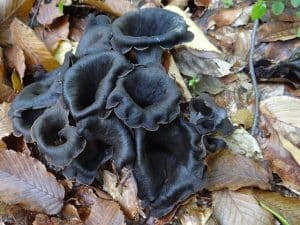
Black Trumpet mushrooms are a common black fungus that grows in forests, sprouting from the soil. You will most commonly find the Black Trumpet mushroom alongside the trunk of an oak or beech tree. This mushroom grows in patches, so where you find a few mushrooms, there are sure to be more in the nearby area, forming in clusters that spread between three and 13 feet. Common places to find these patches include logging roadsides, moss patches, and steep banks from June to September. There are no known similar lookalikes to this mushroom.
With this list, beginner and experienced foragers can explore Oregon and learn more about identifying various mushrooms!

